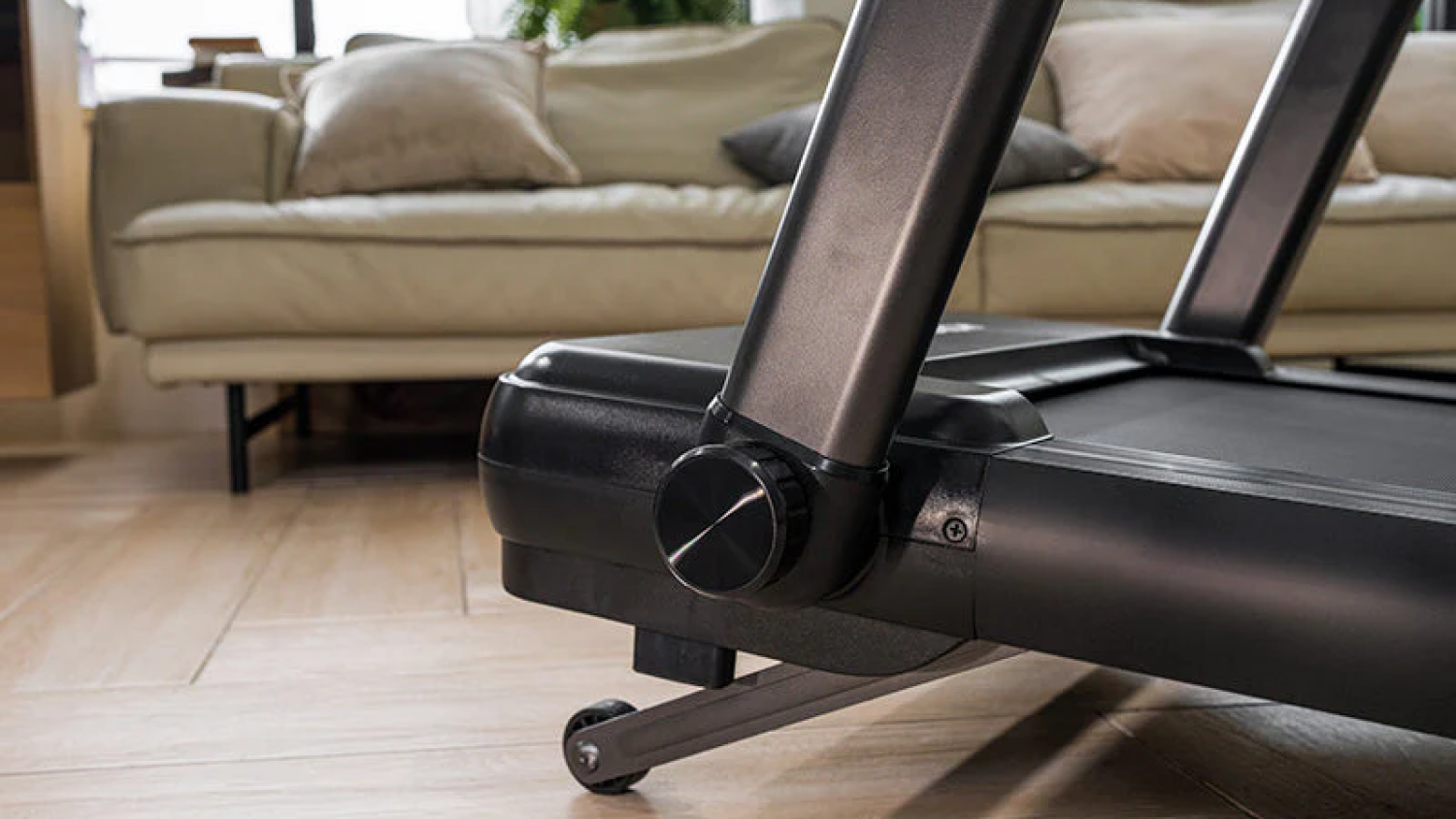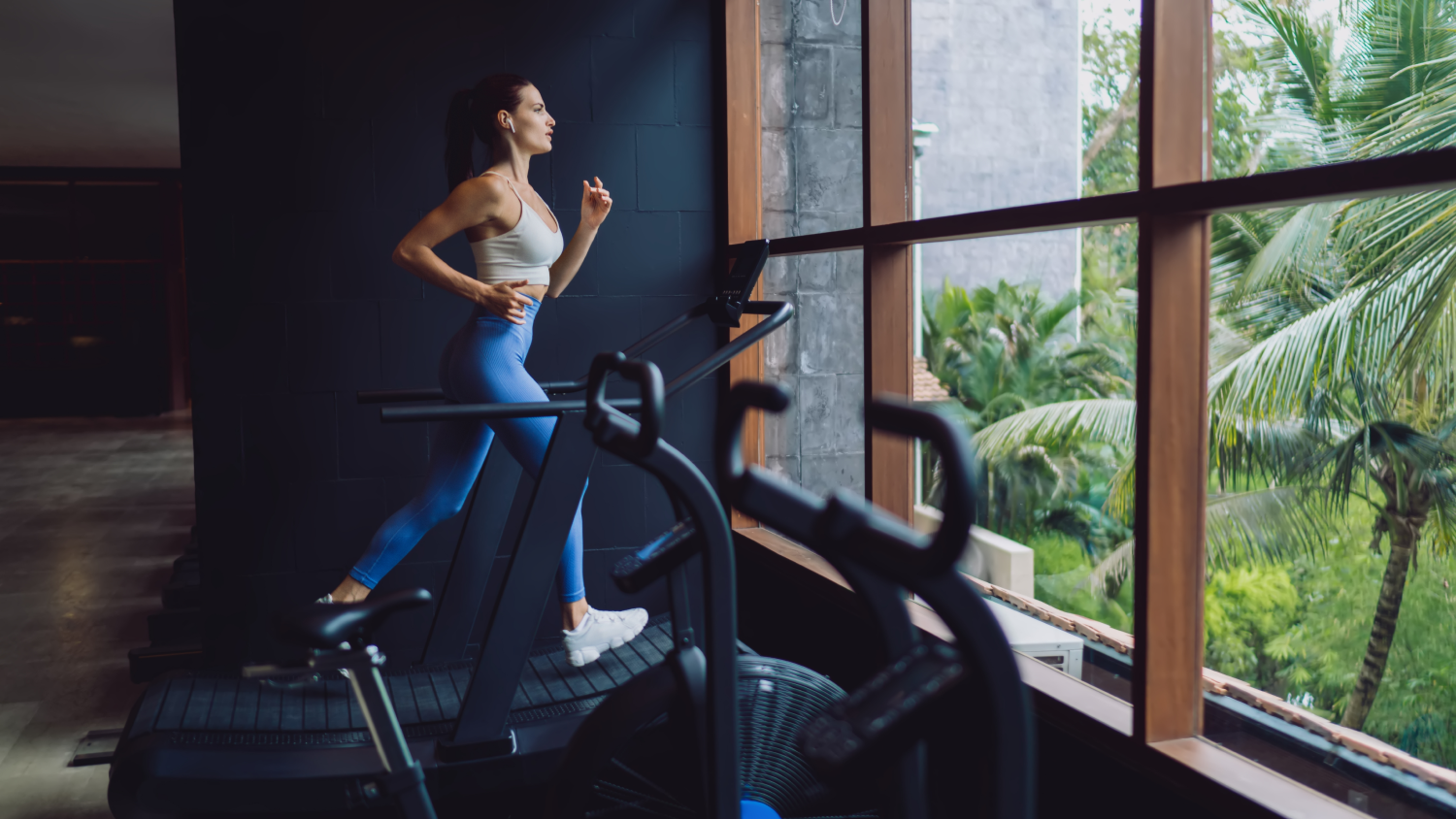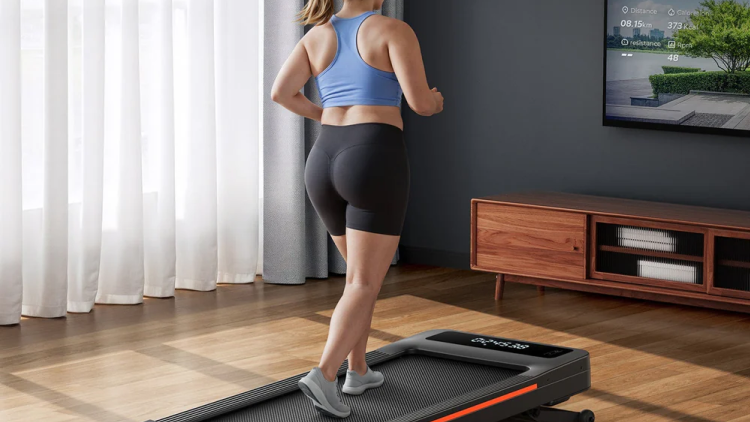When it comes to indoor cardio equipment, you've probably noticed two popular options dominating the market: traditional treadmills and the newer, more compact walking pads. Both promise to keep you moving regardless of weather or schedule constraints, but they serve different needs and fitness goals.
At Merach, we've helped thousands of customers navigate this exact decision. We know that choosing the wrong option can lead to buyer's remorse and unused equipment gathering dust. That's why we've put together this straightforward comparison to help you make the smart choice for your specific situation.
Let's break down the key differences, pros and cons, and practical considerations to help you decide which one deserves a spot in your home.
What's the Difference Between Treadmills and Walking Pads?
Before diving into which one is right for you, let's clarify what sets these two fitness tools apart.
Traditional Treadmills: The Full-Featured Option
Traditional treadmills are what most people picture when thinking about indoor running equipment. They typically feature:
- Handrails and console: Providing stability, safety features, and workout controls
- Larger running surface: Usually 16-22" wide and 50-60" long
- Higher speeds: Typically 0.5-12 mph, suitable for walking through sprinting
- Incline capabilities: Many models offer automatic or manual incline adjustment
- More powerful motors: Usually 2.0-4.0 CHP (continuous horsepower)
- Built-in programs: Pre-programmed workouts, heart rate monitoring, and fitness tracking
- Larger footprint: Requiring dedicated space in your home
Our T12 Foldable Treadmill with 15% Auto Incline represents the modern traditional treadmill, offering speeds up to 7.5 mph with a folding design to help manage space constraints.

Walking Pads: The Space-Saving Alternative
Walking pads (sometimes called under-desk treadmills or treadmill pads) are the minimalist cousins in the treadmill family. They typically feature:
- No handrails or minimal console: Focusing on a flat, low-profile design
- Compact running surface: Usually 16-20" wide and 40-50" long
- Lower speeds: Typically 0.5-4.0 mph, optimized for walking
- Limited or no incline: Some newer models like our T14 Walking Pad do offer incline options
- Less powerful motors: Usually 1.0-2.5 HP, designed for walking not running
- Remote control operation: Many use remote controls or mobile apps instead of built-in consoles
- Ultra-compact design: Often flat enough to slide under furniture when not in use
Our NovaWalk W50 TrekPad takes the walking pad concept further with a 400 lb weight capacity and 12% auto-incline – features rarely found in the walking pad category.
"The choice between a treadmill and walking pad isn't about which one is better – it's about which one better matches your fitness goals, space constraints, and usage patterns." - Merach Design Team

When to Choose a Traditional Treadmill
Traditional treadmills have maintained their popularity for good reason. Here's when a full-featured treadmill is likely your best bet:
You're Serious About Running
If your fitness routine includes running at speeds above 4 mph, especially for extended periods, a traditional treadmill is the clear choice. Walking pads simply aren't designed for running – they lack the motor power, belt durability, and stability features needed for running workouts.
The Running Reality: Running places 2-3 times your body weight in force on the treadmill with each step. Walking pads aren't engineered to handle these forces repeatedly.
Our T12 Foldable Treadmill offers speeds up to 7.5 mph, making it suitable for everything from casual walking to running workouts.
You Value Training Variety
Traditional treadmills offer significantly more workout options:
- Incline training: Most offer inclines of 10-15%, which dramatically increases calorie burn and muscle engagement
- Pre-programmed workouts: Built-in interval, hill, and fat-burning programs
- Heart rate training: Many include heart rate monitoring and zone training features
- Entertainment options: Larger consoles often include media features to keep workouts engaging
The T12 with 15% Auto Incline allows you to simulate uphill terrain, helping you burn up to 60% more calories compared to flat walking.
You Prefer Extra Stability and Safety Features
The handrails and larger frame of traditional treadmills provide important benefits:
- Balance support: Handrails offer stability during more intense workouts
- Emergency stops: Most include safety keys that stop the machine if you stumble
- More stable base: The larger, heavier frame reduces wobbling during use
- Better for beginners: Additional support features help those new to fitness
This added stability is particularly important for seniors, those with balance concerns, or users new to treadmill workouts.
Multiple Household Members Will Use It
If several people with different fitness levels will share the treadmill, a traditional model offers the versatility to accommodate everyone:
- Higher weight capacities: Typically 250-350 lbs (some, like our manual incline T12 model, support up to 300 lbs)
- Speed range for all levels: From slow walking to running speeds
- Adjustable features: Multiple users can customize their experience
- User profiles: Many store settings for different household members
When to Choose a Walking Pad
Walking pads have surged in popularity for good reasons. Here's when this more compact option makes more sense:
You're Short on Space
The most obvious advantage of walking pads is their minimal footprint:
- No dedicated fitness room needed: Use in living rooms, offices, or bedrooms
- Easy storage: Many models like our T14 Walking Pad can slide under beds, couches, or stand in closets when not in use
- No installation required: Most arrive fully assembled and ready to use
- Portable: Typically include wheels to move between rooms easily
For apartment dwellers, those in smaller homes, or anyone who doesn't want fitness equipment dominating their living space, walking pads provide an elegant solution.
You Want to Walk While Working
Walking pads sparked the walking desk revolution, allowing people to add movement to otherwise sedentary workdays:
- Under-desk compatibility: Low-profile design fits under standing desks
- Quiet operation: Models like our T14 operate at under 45dB – quiet enough for phone calls
- Simple controls: Remote operation doesn't require reaching for a console
- Lower speeds: The 0.5-4.0 mph range is perfect for working while walking
Many users report walking 3-5 miles during their workday without it affecting their productivity – turning sedentary work hours into active ones.
You Primarily Want Low-Impact Daily Steps
If your main goal is increasing daily step count and light cardio rather than intensive training:
- Comfortable walking speeds: Optimized for the 1-3 mph range most people prefer for steady walking
- Joint-friendly design: Many walking pads offer excellent cushioning systems
- Convenience factor: The easier setup and operation means you're more likely to use it consistently
- Lower intensity, higher consistency: Perfect for daily health maintenance
Our NovaWalk W50 TrekPad takes walking pads to the next level with a 10-hour continuous runtime – perfect for all-day use.
You're On a Tighter Budget
Generally speaking, walking pads offer a more affordable entry point to indoor walking:
- Lower initial cost: Fewer features mean lower prices (typically 500-2,000+ for full treadmills)
- Lower power consumption: Smaller motors use less electricity
- Fewer repairs: Simpler construction with fewer components that can break
- No dedicated circuit needed: Most work with standard household outlets
The T14 Walking Pad provides an affordable entry point with the added benefit of 9% auto incline – a feature rarely found at its price point.
Key Considerations for Your Decision
Beyond the general pros and cons, here are some practical factors to weigh when making your choice:
Space Reality Check
Be honest about your available space:
- Traditional treadmill needs: 30-36" wide × 70-80" long × 54-60" high (plus safety clearance)
- Walking pad needs: 20-25" wide × 50-60" long × 5-8" high when in use
Don't forget ceiling height! A traditional treadmill with incline adds several inches to your height – problematic in basements with low ceilings.
Noise Sensitivity
Consider your living situation and noise tolerance:
- Traditional treadmills: Typically 60-70 decibels (comparable to normal conversation)
- Walking pads: Usually 40-50 decibels (comparable to a quiet library)
This difference matters significantly in apartments, shared spaces, or if you plan to use the equipment while others are sleeping or working.
Storage Options
Think about what happens when you're not using it:
- Traditional treadmills: Even folding models take up considerable space (roughly 3' × 3' footprint when folded)
- Walking pads: Can slide under beds or couches, or stand in closets (typically under 8" thick)
If storage is a major concern, the T14 Walking Pad offers excellent portability with its compact design.
Your Honest Fitness Goals
Be realistic about your true exercise intentions:
- "I want to train for a 5K/10K" → Traditional treadmill
- "I need to get more steps during my workday" → Walking pad
- "I want to lose weight through consistent cardio" → Either can work, depending on intensity preferences
- "I'm recovering from injury and need low-impact exercise" → Either works, but walking pads are often more joint-friendly
Unique Fitness Needs
Some specific situations may point clearly to one option:
-
Weight considerations: If you're above 250 lbs, look for equipment with appropriate weight capacity. Our NovaWalk W50 supports up to 400 lbs.
-
Joint issues: Both options can be joint-friendly, but walking pads typically focus more on cushioning systems since walking is their primary function.
-
Balance concerns: Traditional treadmills with handrails provide more support for those with stability issues.
-
Motivation challenges: Consider which option you'll actually use consistently. The most effective equipment is the one that doesn't become a clothes rack.
Surprising Hybrids: Getting the Best of Both Worlds
The line between treadmills and walking pads has been blurring, with innovative products offering hybrid features:
Walking Pads with Incline
Traditionally, incline was exclusive to full treadmills, but models like our T14 Walking Pad with 9% Auto Incline and NovaWalk W50 with 12% Auto Incline now bring this calorie-burning feature to the walking pad category.
Adding incline to a walking pad dramatically increases its fitness effectiveness:
- Walking at 3 mph on flat ground burns approximately 232 calories per hour (for a 155 lb person)
- Walking at the same speed on a 10% incline burns approximately 354 calories per hour – a 53% increase!
Folding Treadmills with Streamlined Profiles
Modern folding treadmills like our T12 with 6% Manual Incline offer much more efficient folding mechanisms and sleeker profiles than older models.
These provide:
- The full functionality of a traditional treadmill
- A significantly reduced footprint when not in use
- Easier mobility with transport wheels
- Quick setup and takedown
For many users, these improved folding designs solve the space concerns that would have previously pushed them toward a walking pad.
Making Your Final Decision
Still unsure which option is right for you? Consider these practical decision-making steps:
The Room Test
Actually measure and mark out the footprint of both options in your intended space. Use masking tape on the floor to outline the dimensions and live with it for a day. Does it feel too intrusive? Can you move comfortably around it?
The Workout Test
Try both types before purchasing if possible. Many fitness stores allow test workouts, or you might know friends with each type. Pay attention to:
- How comfortable you feel on each
- Whether you miss handrails on a walking pad
- If you actually use the extra features of a traditional treadmill
The Honesty Check
Write down your top three fitness goals and rank them in priority order. Then match them to the equipment that best serves those specific goals, not the one with the most features or the trendiest design.
The Best of Both Categories from Merach
At Merach, we've developed products that excel in both categories:
Top Walking Pad Recommendation
Our NovaWalk W50 TrekPad redefines what a walking pad can be:
- 400 lb weight capacity - among the highest in the industry
- 12% automatic incline - burn more calories without running
- 10-hour continuous runtime - perfect for all-day use
- Ultra-quiet 25 dB operation - quieter than a whisper
Top Traditional Treadmill Recommendation
The T12 Foldable Treadmill with 15% Auto Incline offers the best of traditional design:
- 15% automatic incline - burn up to 60% more calories
- Speeds up to 7.5 mph - suitable for walking through running
- Heart rate monitoring - optimize your cardio workouts
- Space-saving folding design - minimizes footprint when not in use
Best Hybrid Option
For those wanting the compact footprint of a walking pad with some traditional treadmill features, our T14 Walking Pad with 9% Auto Incline offers the perfect middle ground:
- 9% automatic incline - rare in the walking pad category
- Ultra-quiet motor - perfect for apartments and shared spaces
- Remote control operation - easy adjustments without a console
- Compact, storable design - slides away when not in use
FAQs About Treadmills vs Walking Pads
Can walking pads be used for running in a pinch?
While some walking pads technically reach speeds of 4 mph (a slow jog), they're not designed for running. The motors aren't built for sustained higher speeds, the belts are typically narrower, and without handrails, safety becomes a concern. For even occasional running, we recommend a traditional treadmill like our T12 model.
Are walking pads safe for seniors or those with balance issues?
It depends on the individual's specific needs. Walking pads lack handrails, which many seniors rely on for stability. However, models like our NovaWalk W50 offer exceptional stability with their wider belts and solid construction. For those with significant balance concerns, a traditional treadmill with handrails is generally the safer choice.
How much does electricity usage differ between treadmills and walking pads?
Walking pads typically use 30-50% less electricity than traditional treadmills. A standard walking pad might use 350-750 watts, while traditional treadmills often use 1,000-2,000 watts or more. For perspective, using a walking pad for an hour daily might add 5-10, depending on your local electricity rates.
Do walking pads provide enough exercise for meaningful weight loss?
Absolutely! Walking at a moderate pace of 3 mph for 30 minutes burns approximately 120-150 calories (depending on weight). Do this daily and you could lose 12-15 pounds in a year without any other changes. Adding incline significantly increases calorie burn. Our T14 Walking Pad with 9% Auto Incline can boost your calorie burn by up to 30% compared to flat walking.
Which option tends to last longer with regular use?
Traditional treadmills typically have more robust construction and higher weight capacities, which can translate to longer lifespan under heavy use. However, walking pads have fewer mechanical components that can fail. With proper care, expect 5-8 years from quality walking pads and 7-10 years from quality traditional treadmills. All Merach treadmills and walking pads come with a 2-year warranty, reflecting our confidence in their durability.
Conclusion
The decision between a treadmill and a walking pad isn't about which is better overall – it's about which better matches your specific needs, space, and fitness goals.
Many of our customers who originally purchased walking pads later add traditional treadmills to their home gym when space allows. Others find that a quality walking pad with incline capability, like our NovaWalk W50, provides everything they need for their fitness journey.
Whatever you choose, the most important factor is consistency. The best equipment is the one you'll actually use regularly, not the one with the most features or the highest price tag.
Have more questions about which option is right for you? Our fitness equipment specialists are always available to help you make the perfect choice for your unique situation.






























Leave a comment
All comments are moderated before being published.
This site is protected by hCaptcha and the hCaptcha Privacy Policy and Terms of Service apply.